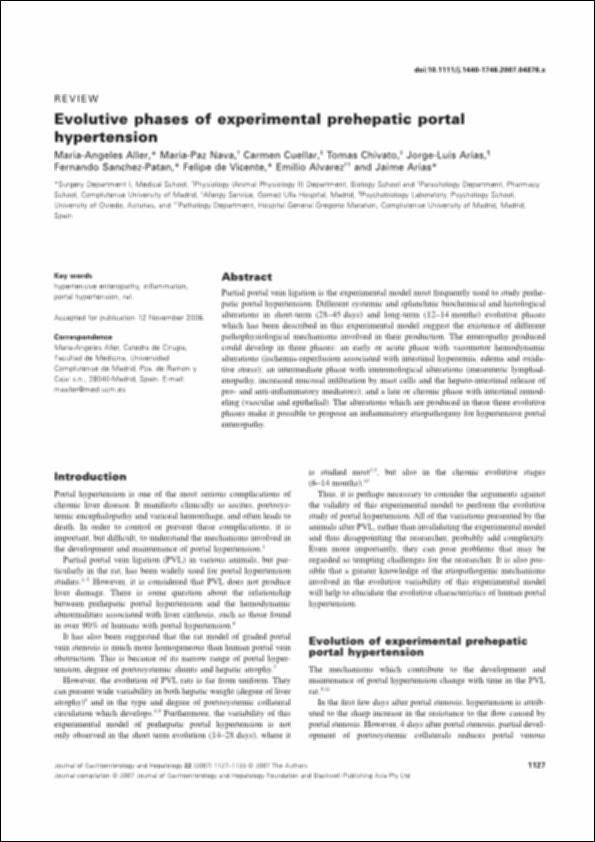Please use this identifier to cite or link to this item:
http://hdl.handle.net/10637/5555Evolutive phases of experimental prehepatic portal hypertension
| Title: | Evolutive phases of experimental prehepatic portal hypertension |
| Authors : | Aller, María Ángeles Nava, María Paz Cuéllar, Carmen Chivato Pérez, Tomás Arias, Jorge Luis Sánchez Patan, Fernando Vicente, Felipe de Álvarez, Emilio Arias, Jaime |
| Keywords: | Hipertensión portal.; Hypertensive enteropathy.; Hypertensive enteropathy.; Inflammation.; Portal hypertension. |
| Abstract: | Partial portal vein ligation is the experimental model most frequently used to study prehepatic portal hypertension. Different systemic and splanchnic biochemical and histological alterations in short-term (28–45 days) and long-term (12–14 months) evolutive phases which has been described in this experimental model suggest the existence of different pathophysiological mechanisms involved in their production. The enteropathy produced could develop in three phases: an early or acute phase with vasomotor hemodynamic alterations (ischemia-reperfusion associated with intestinal hyperemia, edema and oxidative stress); an intermediate phase with immunological alterations (mesenteric lymphadenopathy, increased mucosal infiltration by mast cells and the hepato-intestinal release of pro- and anti-inflammatory mediators); and a late or chronic phase with intestinal remodeling (vascular and epithelial). The alterations which are produced in these three evolutive phases make it possible to propose an inflammatory etiopathogeny for hypertensive portal enteropathy. |
| Description: | En: Journal of Gastroenterology and Hepatology . eISSN 1440-1746. vol. 22, 2007, págs 1127-1133. |
| URI: | http://hdl.handle.net/10637/5555 |
| Rights : | http://creativecommons.org/licenses/by-nc-nd/4.0/deed.es |
| Issue Date: | 7-Nov-2007 |
| Center : | Universidad San Pablo-CEU |
| Appears in Collections: | Medicina |
Items in DSpace are protected by copyright, with all rights reserved, unless otherwise indicated.


